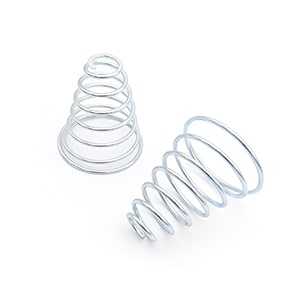Get unique, complex parts easily. No matter your requirements, Chaoyi Spring creates hard-to-produce coil springs and wire forms.
Let us help you create the custom wire form you need, from S-hooks and J-hooks to utility hooks and more.
We work closely with customers across a wide range of industries, helping them design and manufacture made-to-order parts.
Why choose Chaoyi Spring? We prioritize customer-focused collaboration, modern equipment and the latest technology to make your parts per print.
Find the information and guidance you need, from measuring a spring to learning about materials, placing an order and much more.
Compression springs, those coiled wonders of metal, are often unseen but play a vital role in countless everyday objects. From the simple act of opening a pen to the complex


Compression springs, those coiled wonders of metal, are often unseen but play a vital role in countless everyday objects. From the simple act of opening a pen to the complex workings of a car suspension, compression springs provide the essential force needed for countless applications. This article delves into the fascinating world of compression springs, exploring their design, types, applications, and the science behind their remarkable function.

Compression springs, as their name suggests, are designed to resist compression forces. They are made by coiling a wire, often made of spring steel, into a helical shape. This helical design allows the spring to absorb energy when compressed and then release it when the force is removed, pushing back to its original shape. The beauty of compression springs lies in their ability to store and release energy in a controlled and predictable manner.
Imagine a simple pen. The spring inside the pen allows you to push down the tip, storing energy. When you release the pressure, the spring releases the stored energy, pushing the tip back out. This is a basic example of how compression springs work, but they can be found in countless other applications, ranging from the mundane to the sophisticated.
Compression springs come in a variety of shapes and sizes, each designed to meet specific requirements. Some of the most common types include:
The type of compression spring used in a particular application depends on several factors, including the desired spring rate, the amount of force required, the available space, and the operating environment. Engineering considerations, such as fatigue resistance, corrosion resistance, and temperature tolerance, also play a vital role.
Compression springs are ubiquitous in our modern world, silently supporting countless applications. Here are just a few examples:
The list of compression spring applications is nearly endless, demonstrating their versatility and importance in countless industries.
The behavior of compression springs is governed by Hooke's Law, a fundamental principle in physics. This law states that the force exerted by a spring is directly proportional to its displacement from its equilibrium position. In simpler terms, the more you compress a spring, the more force it will exert back.
The spring rate, a key characteristic of a compression spring, is a measure of how much force is required to compress the spring by a given distance. A higher spring rate indicates a stiffer spring, requiring more force to compress. The spring rate can be calculated using the following formula:
Spring Rate (k) = (G * d^4) / (8 * D^3 * n)
Where:
This formula shows that the spring rate is influenced by the material properties, the wire diameter, the coil diameter, and the number of coils. By carefully selecting these parameters, engineers can design compression springs to meet specific force and displacement requirements for various applications.
Selecting the right compression spring for a specific application is crucial. It involves considering factors such as:
By carefully considering these factors, you can choose a compression spring that will meet the specific needs of your application and ensure optimal performance and longevity.
Compression springs continue to evolve, with advancements in materials science and manufacturing techniques leading to new and improved designs. For instance, the development of high-performance alloys and composite materials is enabling the creation of compression springs that are lighter, stronger, and more resilient than ever before.
Moreover, advancements in additive manufacturing, or 3D printing, are opening up new possibilities for the design and production of custom compression springs. This allows for the creation of springs with complex geometries and intricate designs, tailored to meet highly specific application requirements.
As technology continues to advance, compression springs will undoubtedly continue to play a vital role in our world, supporting innovation and progress in diverse fields. From the simple act of opening a pen to the complex workings of spacecraft, these unassuming but powerful devices will continue to shape our world in remarkable ways.
Compression springs, though often hidden from view, are essential components in countless applications, quietly powering everything from pens to cars. Their ability to store and release energy with precision makes them invaluable in our modern world. As materials science and manufacturing techniques continue to advance, compression springs will undoubtedly continue to evolve, finding new applications and playing an increasingly crucial role in shaping our future.
Browse some of the custom wire forms and springs that we manufacture. Don’t see what you need? We specialize in made-to-order products that meet your application requirements.
Visit Our GalleryNeed a custom wire form or coil spring? We make it work. Fill out the contact form and a representative will respond within 1 business day. If you have a PDF or CAD file, you can submit to request a quote.